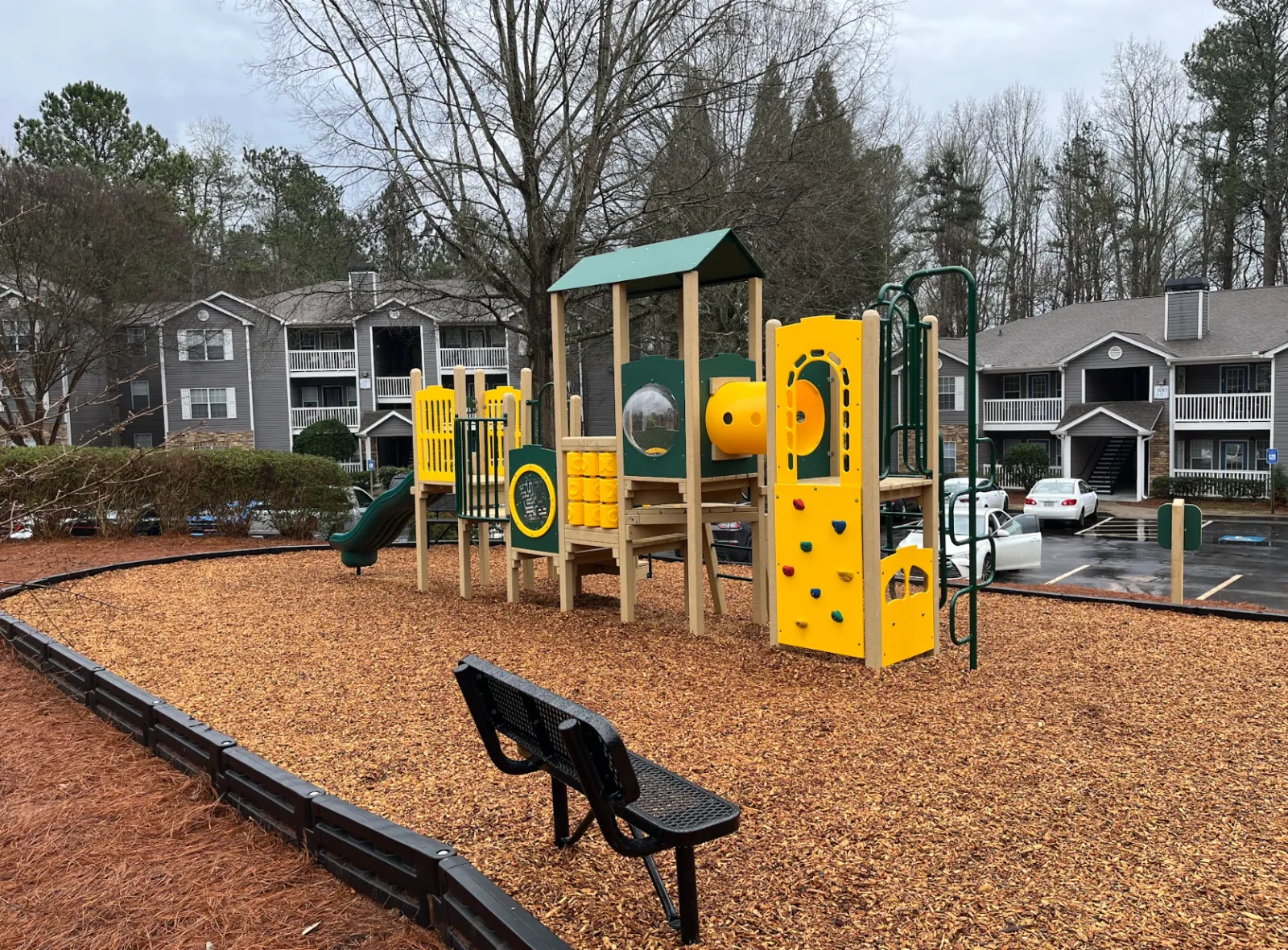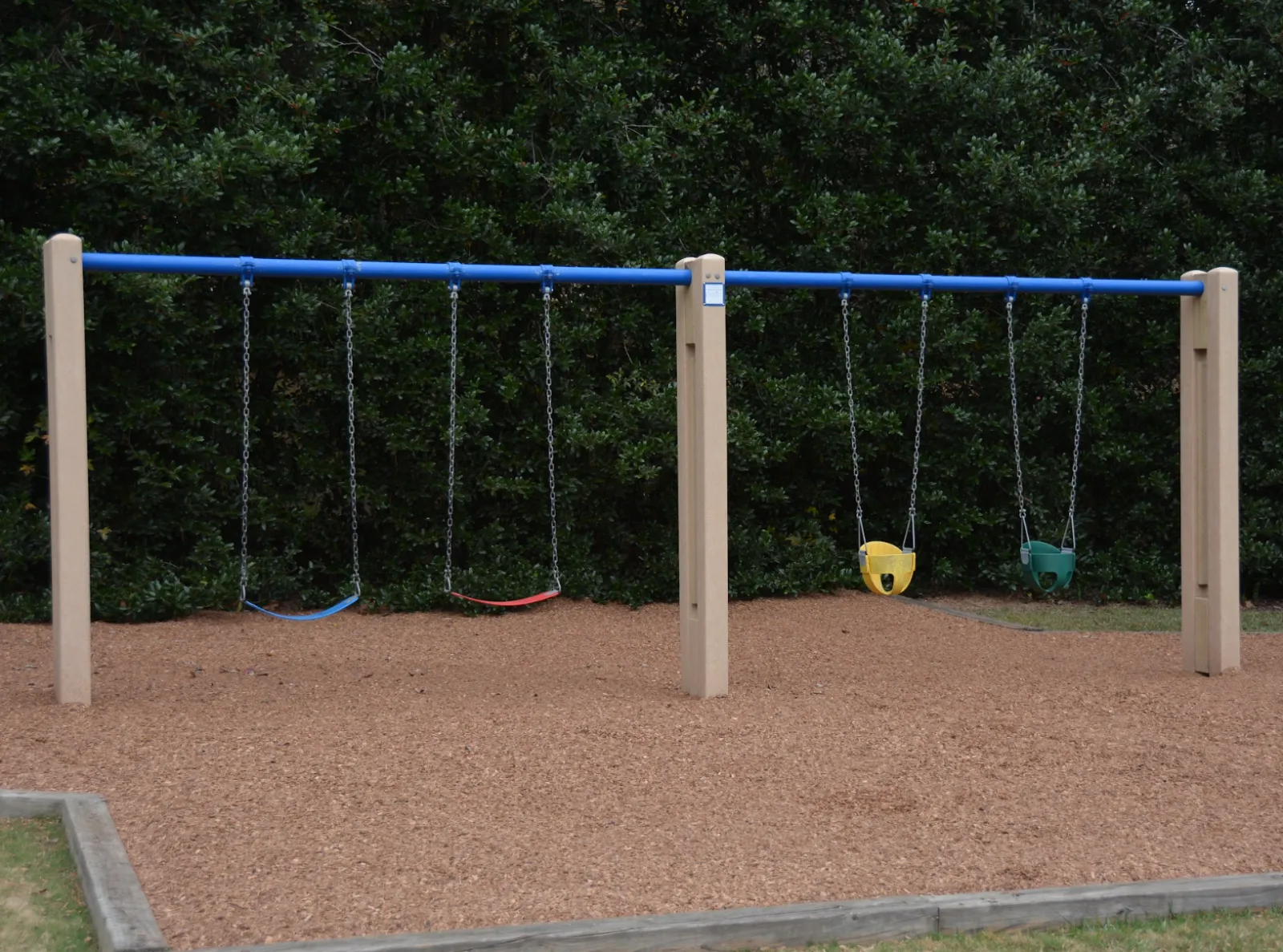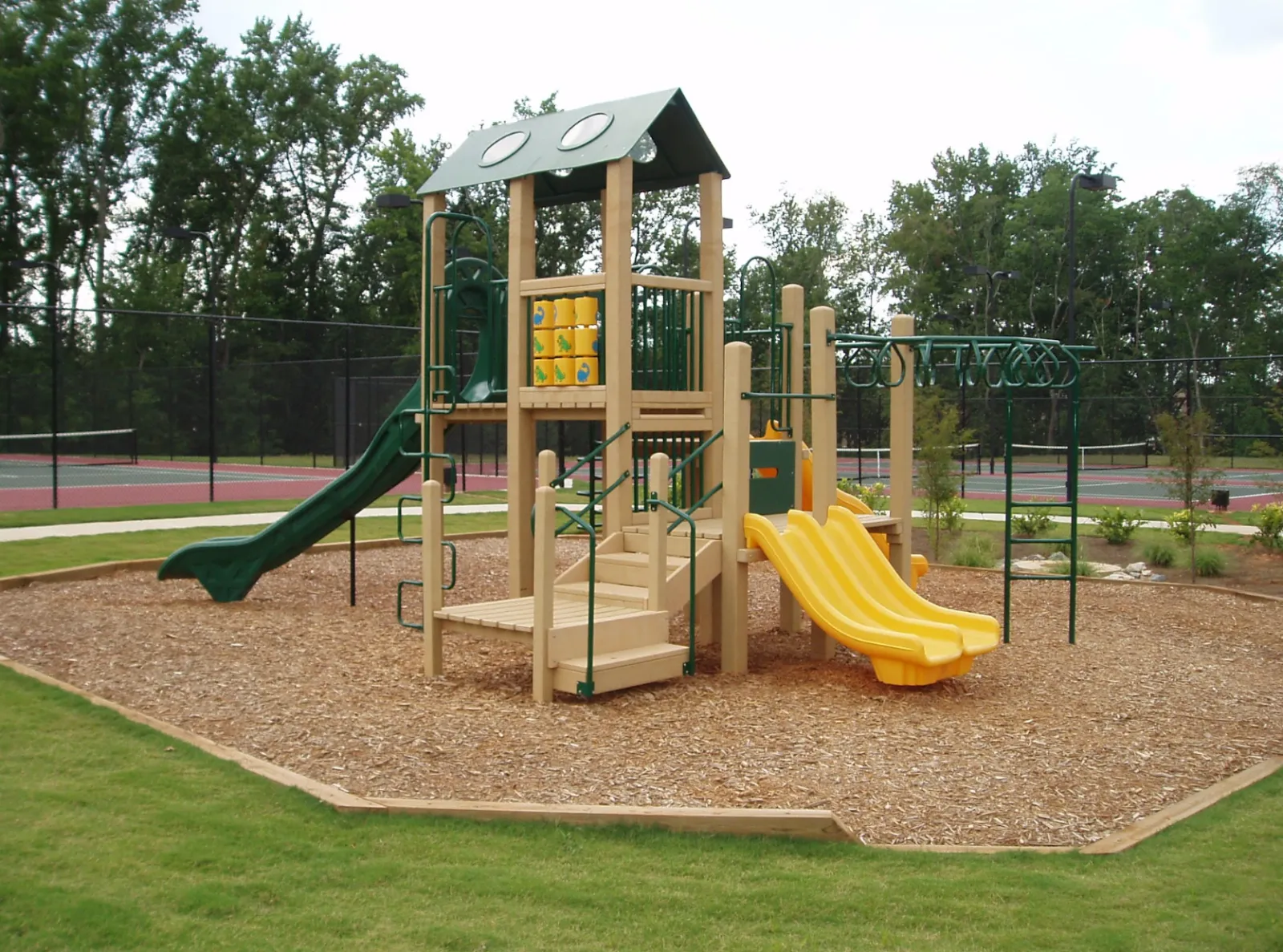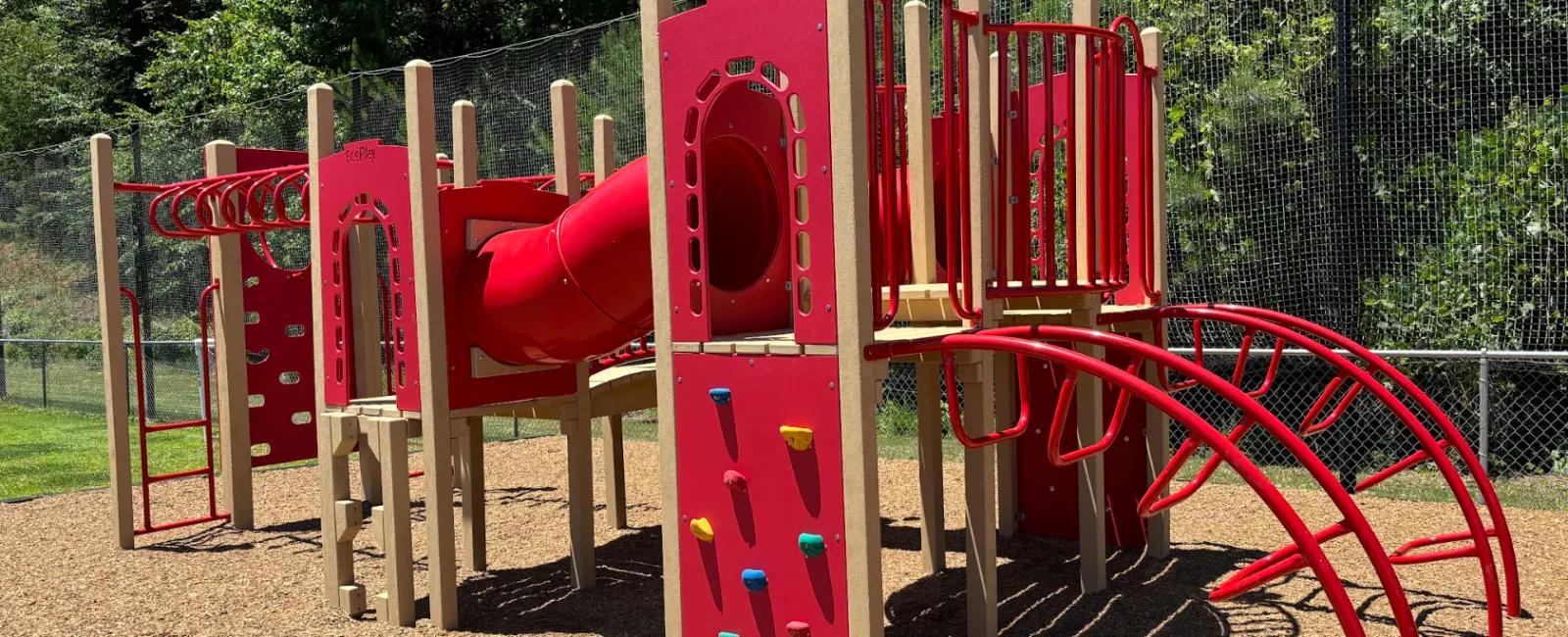Designing a community playground is complex. With the safety of children as the main priority, these tasks require huge responsibility.
Today, we'll go over how to design a community playground with the kids' needs in mind.
Read on for the top ten factors to consider when you design a playground. Plus, learn about the importance of having a well-built playground in your area.

10 Tips To Consider When Designing A Community Playground
Outside of their homes, playgrounds is often the first place where kids develop their motor skills. Building them means taking various factors into account.
Here are ten tips to consider when you're designing playgrounds.
1. Understand the Community Needs
First, you should understand that each neighborhood has different needs. Playgrounds are never one-size-fits-all. You must consider the user's age group, interests, and abilities.
To understand the community's needs, you must assess and plan. Think about who will use the playground and what activities they take part in..
For instance, if you want to conduct activities at the playground, set up an open space where people can gather.
Also, you should consider how many people will use the community playground. If a large number of people will use the playground, you need to invest in sturdy materials and adjust the playground size accordingly.
Community Demographics to Consider
Below are common groups that may use the community playground.
Children Below Five: Children below five will require equipment closer to the ground.
Older Children: Older children can do more challenging activities. For example you may climbers or monkey bars are challenging for older kids.
Teens and Adults: Community playgrounds are also fun places for adults. You can create a playground where they can do fitness activities like basketball and tennis.
Children with Disabilities: Community playgrounds are the most fun when inclusive. Think about whether you'll add sensory-stimulating elements for children with various ability levels and requirements.
2. Focus on Playground Safety
How to Design a Playground That's Safe
Here are essential tips for keeping a playground safe.
Be Ready for Falls: The surfaces around the playground should have wood chips, sand, pea gravel, or rubber. These surfaces can absorb impact whenever a kid falls from the equipment.
Install Guardrails: Guardrails on ramps and platforms can prevent falls, especially if younger kids use the playground.
Survey the Area: Look for tripping hazards like tree stumps and exposed concrete floorings.
3. Encourage Physical Activity and Skill Development
Playgrounds are places where children develop their skills as they exercise which is important to keep in mind when selecting which equipment to add to your playground.
By incorporating various elements into the playground, you can help with the children's development. Not to mention, having variety keeps kids engaged and interested!
Community Playground Equipment That Encourages Physical Activity
Below are examples of playground equipment that promote physical activity.
Slides: Slides are staples in playgrounds, and for good reason! They help with spatial awareness, risk assessment, and confidence in children.
Swings: Swings develop sensory systems in young children. This can help them adapt to different sensations and improve focus.
Climbers or Monkey Bars: Climbers and monkey bars boost cardiovascular health. They also improve flexibility, coordination and strength
Ramps: Ramps provide pathways for children with mobility impairments. Having them ensures your playground is inclusive and accessible.
Sensory Equipment: Some children will appreciate playgrounds with various sensory equipment. These include interactive musical instruments, sandboxes, and tactile panels.
4. Incorporate Natural Elements
Playgrounds are a way for young children to connect with nature. Incorporating natural elements in your playground has positive effects on mental health.
Being in nature can improve attention and relaxation in children as well as a range of other cognitive benefits.
If you're building a playground, be sure to incorporate natural elements that are less structured. Doing so can encourage imaginative play!
Natural Elements to Incorporate Into the Playground
Here are some ideas on natural elements you can incorporate into the playground!
Tree Logs and Stumps: You can create an obstacle course from tree stumps and boulders. These can provide texture and a sensory experience for children.
Educational Elements: The playground is an opportunity to teach kids about environmental awareness. You may use signage and puzzles to add educational elements to it.
5. Create Social Spaces
Open spaces like playgrounds are perfect for socializing because you can do various activities. They're areas where people can gather and build community.
You should create social spaces in the playground to make it inclusive for all ages. Parents can wait in these areas while their children are playing. It's here where they may interact with other parents.
Social spaces in playgrounds help residents develop a strong community. These constructive spaces facilitate shared experiences, providing a sense of belonging.
Safety and security also improve as people become more likely to look out for each other. Overall, social spaces in playgrounds make a neighborhood more pleasant to live in.
Social Spaces to Create in Playgrounds
Here are a few examples of social spaces you can create with the playground.
Picnic Areas: Picnic tables, chairs, and grills encourage people to share food and drinks as they enjoy the green space. You can even build facilities for small businesses in these picnic areas.
Open Spaces: Be sure to leave open spaces where people may gather for Zumba sessions or outdoor parties. Open spaces are multi-functional because you can use them as venues for neighborhood events.
Public Gardens: A public garden can beautify the playground. They promote positive community involvement and boost public health.
6. Add Lighting To Your Community Playground
When you're designing a playground, consider adding lighting. Lighting isn't just for aesthetics, it can make the playground safer.
Essential Lighting for Community Playgrounds
Here are some of your options for lighting a community playground.
Path Lights: Path lights illuminate the walkways and encourage night strolls. These lights make uneven surfaces safer as people can see where they're going.
Solar Lights: Solar lights reduce your carbon footprint. They also help you save on electricity bills.
Motion-Activated Lights: Motion-activated lights are energy-saving and environmentally friendly. They come on only when needed, causing less light pollution.
Architectural Poles: Architectural poles add character to the playground. They're decorative, contributing to the playground's allure.
Interactive Lights: Interactive lights bring a new fun element to the playground. You can make use of lighting installations to engage kids in innovative play.
7. Ensure Sustainability
Sustainable playgrounds support the ecosystem and encourage the local flora. They emit minimal pollution and ensure that the air and water of the neighborhood are clean.
Investing in durable materials, such as EcoPlay® lumber lasts longer and is more sustainable than traditional building materials.
How to Design a Sustainable Community Playground
Here are tips to apply to the playground to make it more sustainable.
Use Recycled Materials: You can use recycled materials for creating the equipment. Recycled plastic and rubber are durable and cost-effective solutions.
Install Trash Bins: This will help encourage kids and partners alike to dispose of their waste properly.
Install Wildlife Ponds: Wildlife ponds are an oasis for the birds in the area. They provide breeding spaces for frogs and dragonflies, which kids will enjoy watching.
Build Natural Habitats: You can provide spaces in the playground for wildlife to grow. Some examples are bee hotels, nesting boxes, and hedgehog ditches.
8. Get Help From Experts
Hiring a professional to design a playground can improve its safety and longevity. Experts like EcoPlay Structures can make the whole process quick and easy!
EcoPlay has more than 25 years of experience building playgrounds. Its team has the knowledge and skillset to ensure the job gets done right.
By working with us, you no longer have to worry about sourcing and transporting materials.
How to Get Help From Playground Professionals
Here's the typical process for hiring experts from EcoPlay Structures.
Contacting EcoPlay: First, you can contact the EcoPlay sales team to discuss the project. We'll detail the timeline, budget, configuration, and space requirements.
Site Visit: EcoPlay will send representatives to assess the terrain.
Proposal Approval: Afterward, EcoPlay will send you a proposal for approval. You can take your time before approving and signing the contract.
Building and Installation: EcoPlay gathers the materials and begins construction. The installation only takes 8 to 12 weeks before it's ready for the community!
9. Consider the Community Playground Equipment
The playground equipment is the centerpiece of your design project. It's where the children will spend most of their time as they play their hearts out.
Of course, there are some factors to consider before you choose the equipment.
First, you must determine which age group will be using the playground. Its design will change depending on the demographics.
Finally, think about the long-term cost of ownership. Many playgrounds deteriorate over time, causing financial stress in the long run. EcoPlay® lumber has a 50 year warranty.
Playground Equipment at EcoPlay
Eco-Play has beautiful and eco-friendly equipment.
Here are some of the equipment you can buy from EcoPlay.
Sensory Playground Equipment: EcoPlay provides opportunities for sensory integration. You can select from various tactile panels, musical instruments, and interactive light displays.
Slides: The slides at EcoPlay are versatile. You can even install tall towers with chute slides older kids will enjoy!
Wheelchair-Accessible Equipment: Ecoplay offers equipment for accommodating wheelchairs and other mobility devices. These include ramps, sensory swings, and adaptive seats.
Group Activity Equipment: EcoPlay offers unique equipment you won't find in other playgrounds. It has hurricane spinners, ball pits, and ball tossing for group activities.
Climbers: EcpPlay has a selection of freestanding climbers that promote climbing. Children can use these structures to safely have fun!
10. Buy the Right Community Playground Materials
Many people fail to realize that the choice of playground materials matters. The materials can affect how long the structure will last, as well as how safe the playground is.
So, how can you ensure your playground is free from any hazards related to the material?
When choosing a material for the playground, you should think about how well they'll do outdoors.
They must be able to withstand the wear and tear of the thousands of kids who use them. This is so that no hazards result from damages to the equipment.
It also helps if you can source the materials locally. Doing this can save you a ton on transportation costs.
Playground Materials to Choose From
Let's explore some of the most cost-effective and safe playground materials.
Metal: Metal playgrounds are sturdy and affordable to install. That said, they rust and can even burn kids when exposed to harsh sunlight.
Wood: Wood is a natural material that can withstand sunlight. The only downside is it's prone to rotting when damaged by water.
Plastic: Plastic is a durable and safe material for kids. But it may not be the most eco-friendly.
EcoPlay® lumber: Ecoplay lumber is a durable, eco-friendly material made from recycled HDPE. It's easy to maintain and sturdy, able to withstand decades of use.

The Benefits Of Playgrounds For Community
Below are the benefits of playgrounds for the community.
1. Muscle Development
Playgrounds may seem unimportant for some. However, they play a role in your children's physical development.
Playgrounds challenge a child's balance, agility, and coordination. They can help kids learn how to climb and walk with more confidence!
2. Cardiovascular Health
Promoting cardiovascular health in early childhood is important to avoid future issues with type 2 diabetes or cardiovascular disease.
Fortunately, playgrounds in communities lead to more physical activity which can help improve cardiovascular health in children.
3. Cognitive Development
Outdoor play is crucial in developing a child's brain and intellect.
Community playgrounds are beneficial because many kids learn through exploration and risk-taking. Playgrounds with geometric concepts allow children to solve problems and think critically.
For this reason, a well-designed playground may improve children's cognitive skills.
4. Social Development
Community playgrounds allow kids to become more social. They learn to share, collaborate, and take turns as they interact with other children.
Not only that, community playgrounds also have a positive effect on adults.
These playgrounds can serve as free places to socialize. You can bring your pets along for a walk and meet new people.
Playgrounds bring the community together and foster a sense of unity!
5. Mental Health
Aside from the physical benefits, playgrounds also contribute to children's mental health.
Having outdoor spaces and playgrounds to enjoy can help reduce fatigue and anxiety in children. Additionally, community playgrounds offer meaningful opportunities for kids to release stress.
By designing engaging playgrounds, you can encourage kids to play and form healthy bonds.

Conclusion
Designing a community playground takes work. To get the best results and ensure safety, you should consider working with professionals.
If you need help with the project or have any other questions about community playgrounds, please don't hesitate to reach out to EcoPlay!
